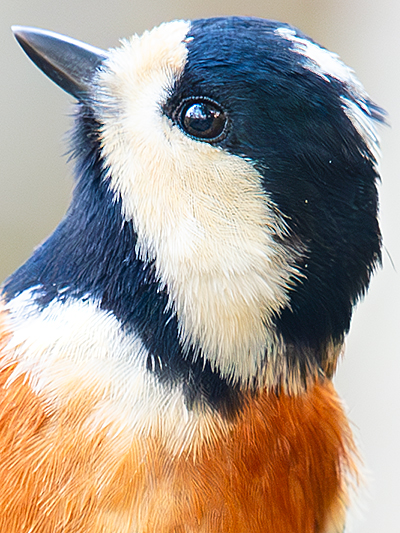by Craig Brelsford
Founder, shanghaibirding.com

A shanghaibirding.com research team recorded Great Tit Parus major kapustini on 31 May in Jiayin County, Heilongjiang. On eBird the Jiayin County Great Tit is the easternmost ever recorded in China. We noted the individual at a point (48.979053, 130.019775) 170 m south of the Amur River in a tree-lined vegetable garden behind a large hotel.
Our major was operating in the zone of contact between Great Tit and Japanese Tit P. minor minor. On 29 May we found Japanese Tit 4.3 km (2.7 mi.) west of the Great Tit site in semi-open woodland along the Wuyun River (48.972709, 129.961132).
Great Tit and Japanese Tit were formerly thought to be races of P. major. Päckert et al. (2005) argued for the elevation to species status of Japanese Tit P. minor. Support for their proposal came largely from studies on the Russian side of the middle Amur valley (156, 171). Our team was operating on the Chinese side, directly across the river.
From each bird we immediately got a strong impression of either Great Tit or Japanese Tit. That the birds we studied, despite being in the hybrid zone, should be pure or nearly pure major or minor would come as no surprise to Päckert et al.: “The contact zone in the middle Amur valley apparently produces hybrids in a limited area and to a limited extent” (2005, 171). Kvist et al. however caution that hybrids may be more plentiful than Päckert et al. report and that birds that look like one species may be hybrids (2007, 208).
Habitat supports our identifications. Päckert et al. write, “Although both forms meet in the outskirts of small towns and villages, they basically differ in habitat preference[,] with major inhabiting human settlements and minor preferring forest habitats” (2005, 170). The garden in which we found our major is in the village of Jiayin Farms, while the riparian woodland in which we found minor is 400 m from the nearest human settlement.
Various authors document the expansion of the range of Great Tit in the Russian Far East. “Great Tit has spread … into Amurland in SE Siberia, following the expansion of cultivation” (Harrap and Quinn 1995, 358). Päckert et al. report major in the Amur valley as far east as Khabarovsk (2005, 166). eBird has records around that city and even further downriver at Komsomolsk-on-Amur (2024b). Kapitonova et al. also document the advance of major into Komsomolsk (2011, 896).
On the Chinese side of the Amur, the status of major is less clear. If increased economic activity on the Russian side is leading to an expansion there of the range of major, then similar developments on the Chinese side could be having the same effect on a species famous for its readiness to live alongside man. Birders on the Chinese side of the Amur should be on the lookout for Great Tit, especially in towns and villages along the river east of our site. More records of major from the Chinese side will help delineate the southern boundary of the zone of contact between major and minor.
SOUND-RECORDINGS
Both recordings capture the response of an individual initially stimulated by playback of a Great Tit from European Russia (https://xeno-canto.org/32820). As the bird drew closer, I continued stimulating it with playback of its own song.
Great Tit Parus major kapustini, song (3 strophes), garden behind Double Dragon Business Hotel (双龙商务宾馆; 48.979053, 130.019775), Jiayin Farms (嘉荫农场), Heilongjiang, China, 31 May, by Craig Brelsford (0:18; 3 MB)
Recording:
Spectrogram showing final 2 of the 3 strophes:

Japanese Tit Parus minor minor, song (1 strophe), Wuyun River Bridge (48.972692, 129.962264), Jiayin County, Heilongjiang, 29 May, by Craig Brelsford (0:04; 864 KB)
Recording:
Spectrogram (complete):

PHOTOS & MAP

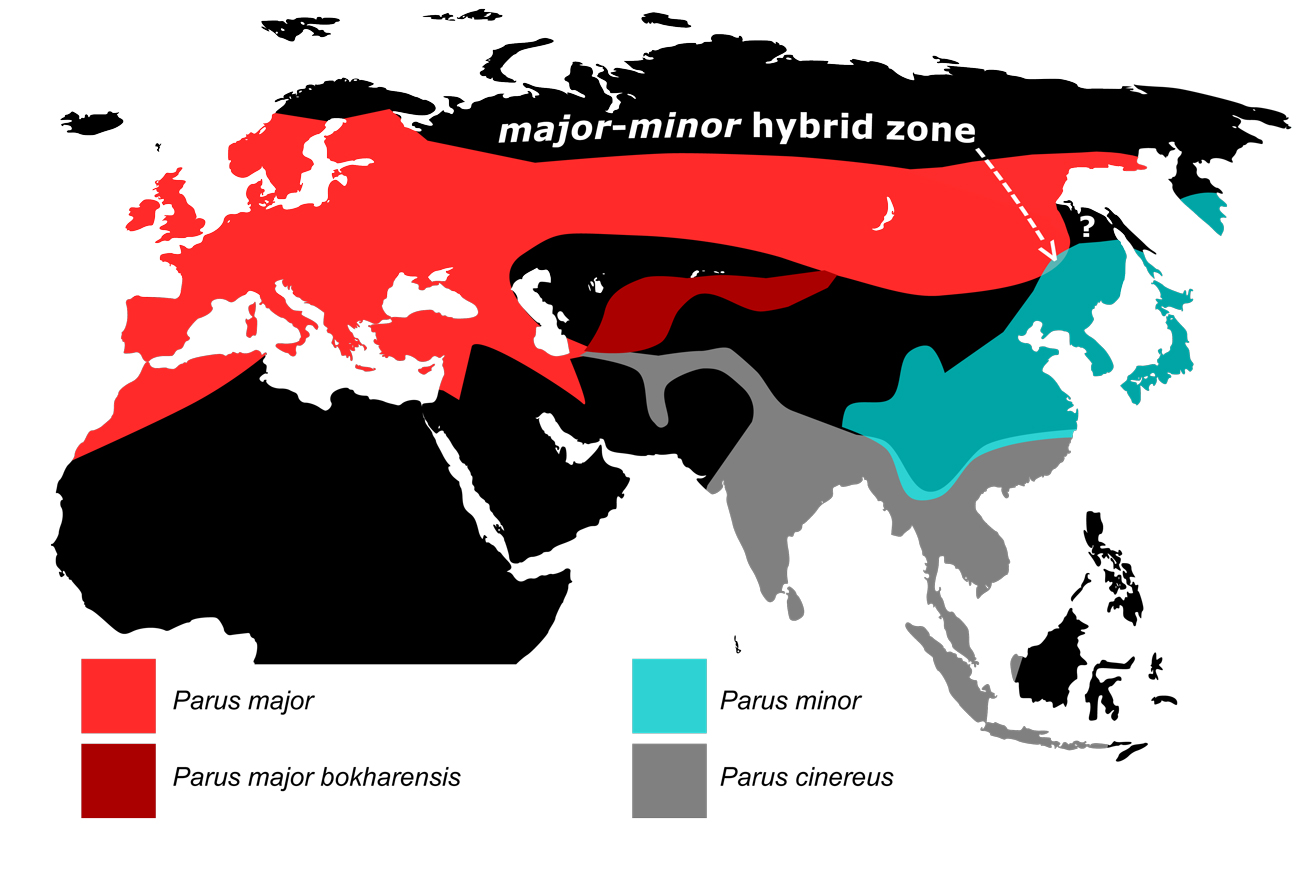

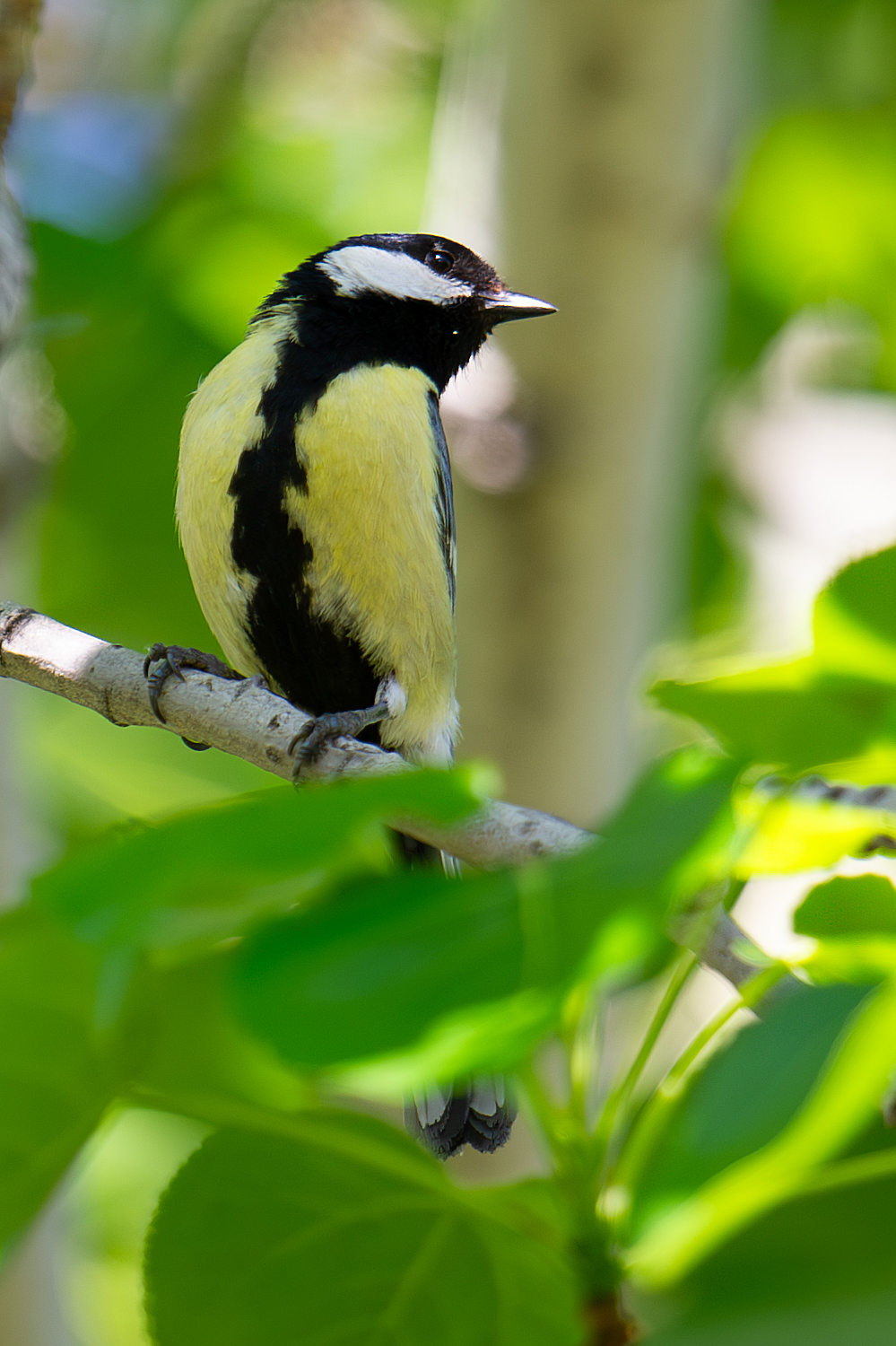
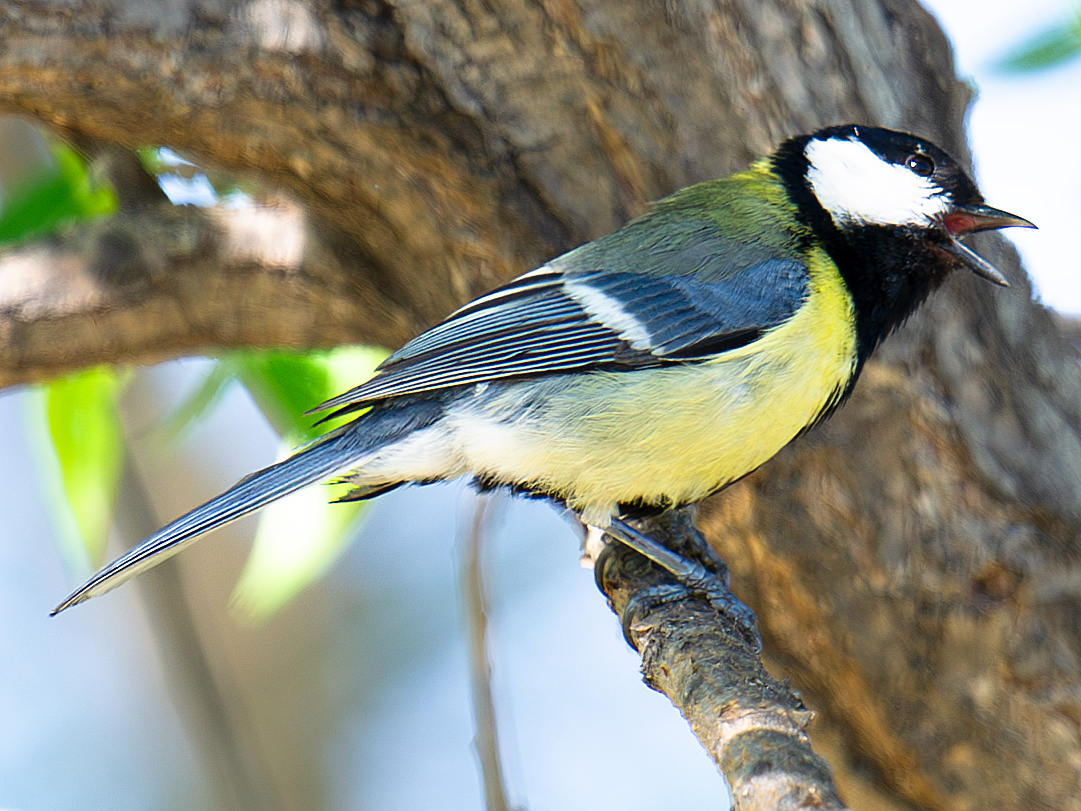
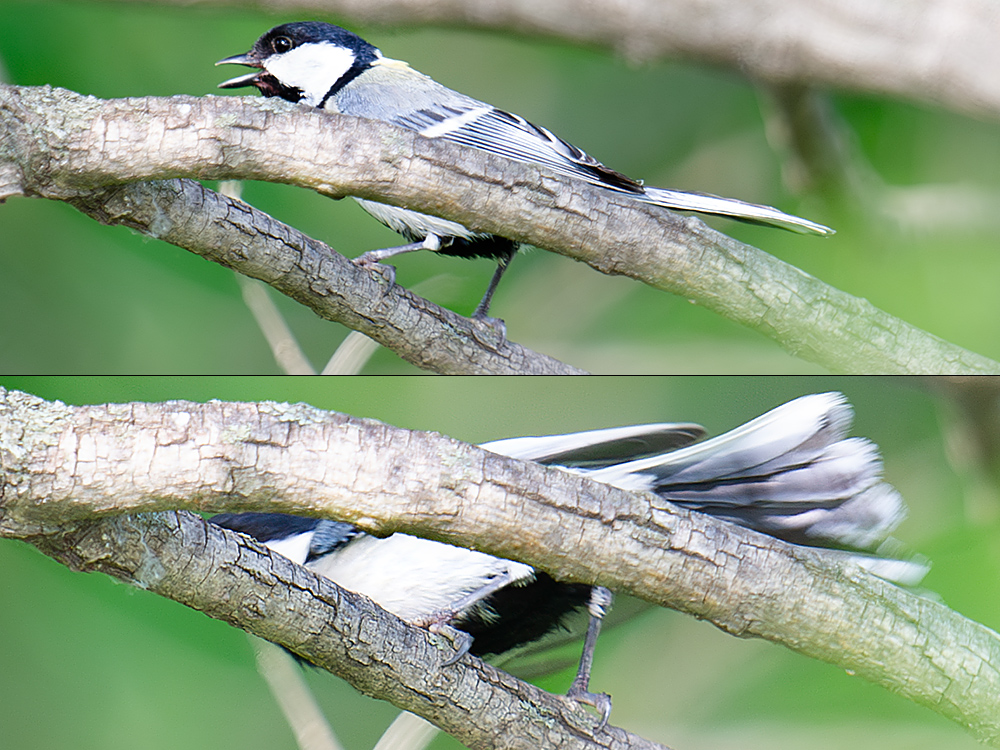


Brelsford, Craig, and Elaine Du (2024a). eBird Checklist: https://ebird.org/checklist/S177938323. eBird: An online database of bird distribution and abundance [web application]. eBird, Ithaca, New York. Accessed: 22 Oct 2024. Note: Checklist from Wuyun River Bridge, 29 May 2024.
Brelsford, Craig, and Elaine Du (2024b). eBird Checklist: https://ebird.org/checklist/S178294254. eBird: An online database of bird distribution and abundance [web application]. eBird, Ithaca, New York. Accessed: 22 Oct 2024. Note: Checklist from Double Dragon Business Hotel, 31 May 2024.
eBird (2024a). eBird Species Page: https://ebird.org/species/gretit1/CN-23. eBird, Cornell Lab of Ornithology, Ithaca, New York. Accessed: 22 Oct 2024. Note: Species page for Great Tit Parus major, Heilongjiang, China.
eBird (2024b). eBird Species Page: https://ebird.org/species/gretit1/RU-KHA. eBird, Cornell Lab of Ornithology, Ithaca, New York. Accessed: 22 Oct 2024. Note: Species page for Great Tit Parus major, Khabarovsk Krai, Russia.
eBird (2024c). eBird Species Page: https://ebird.org/species/gretit1/RU-MAG. eBird, Cornell Lab of Ornithology, Ithaca, New York. Accessed: 22 Oct 2024. Note: Species page for Great Tit Parus major, Magadan Oblast, Russia.
eBird (2024d). eBird Species Page: https://ebird.org/species/gretit4/RU-KAM. eBird, Cornell Lab of Ornithology, Ithaca, New York. Accessed: 22 Oct 2024. Note: Species page for Japanese Tit Parus minor, Kamchatka Krai, Russia.
eBird (2024e). eBird Species Page: https://ebird.org/species/gretit4/CN-23. eBird, Cornell Lab of Ornithology, Ithaca, New York. Accessed: 22 Oct 2024. Note: Species page for Japanese Tit Parus minor, Heilongjiang, China.
eBird (2024f). eBird Species Page: https://ebird.org/species/gretit4/RU-KHA. eBird, Cornell Lab of Ornithology, Ithaca, New York. Accessed: 22 Oct 2024. Note: Species page for Japanese Tit Parus minor, Khabarovsk Krai, Russia.
eBird (2024g). eBird Species Page: https://ebird.org/species/gretit4/RU-AMU. eBird, Cornell Lab of Ornithology, Ithaca, New York. Accessed: 22 Oct 2024. Note: Species page for Japanese Tit Parus minor, Amur Oblast, Russia.
eBird (2024h). eBird Species Page: https://ebird.org/species/gretit1/RU-AMU. eBird, Cornell Lab of Ornithology, Ithaca, New York. Accessed: 22 Oct 2024. Note: Species page for Great Tit Parus major, Amur Oblast, Russia.
Gosler, A. G. and P. Clement. Family Paridae (Tits and Chickadees). Pp. 739–741 in: del Hoyo, J., A. Elliot, and D. A. Christie, eds. Handbook of the Birds of the World. Vol. 12. Picathartes to Tits and Chickadees. Lynx Edicions, Barcelona, Spain, 2007.
Harrap, Simon and David Quinn. Chickadees, Tits, Nuthatches, & Treecreepers. Princeton University Press, 1996.
Kapitonova, L. V., S. M. Smirenskiib, D. S. Selivanovab, V. V. Fedorovb, and N. A. Formozov. “The History of Ranges of the Great Tit (Parus major) and Japanese Tit (Parus minor) in the Amur Region.” Biology Bulletin 38, no. 9 (2011): 896–910. https://dx.doi.org/10.1134/S1062359011090044
Kvist, Laura, Tayebeh Arbabi, Martin Päckert, Markku Orell, and Jochen Martens. “Population differentiation in the marginal populations of the great tit (Paridae: Parus major).” Biological Journal of the Linnean Society 90 (2007): 201–210. https://doi.org/10.1111/j.1095-8312.2007.00726.x
MacKinnon, John. Guide to the Birds of China. Oxford University Press, 2022.
Päckert, Martin, Jochen Martens, Siegfried Eck, Alexander A. Nazarenko, Olga P. Valchuk, Bernd Petri, and Michael Veith. “The great tit (Parus major) – a misclassified ring species.” Biological Journal of the Linnean Society 86 (2005): 153–174. https://doi.org/10.1111/j.1095-8312.2005.00529.x
FURTHER READING
shanghaibirding.com offers the world’s most complete coverage of birding Heilongjiang, Northeast China, and Siberia and the Russian Far East. Click any link:

• Band-bellied Crake and Other Northeast China Specialties: Birding eastern Heilongjiang in May and June, the height of breeding season, our team noted Band-bellied Crake, found breeding Eurasian Eagle-Owl and Mandarin Duck, and recorded secretive species Rufous Hawk-Cuckoo and Gray’s Grasshopper Warbler.

• Birds of the Remnant Manchurian Forest: Elaine Du and Craig Brelsford became the first birders to survey Xidaquan, a vast forest reserve in Elaine’s home county of Boli in eastern Heilongjiang. The duo noted 91 species around Xidaquan, among them Ural Owl and regional breeders Eastern Crowned Warbler, Radde’s Warbler, and White-throated Rock Thrush.

• Jankowski’s Bunting and Other Northeast China Species: A shanghaibirding.com research team found Jankowski’s Bunting in Inner Mongolia and counts of up to 600 Siberian Crane in Jilin. Tumuji wetland yielded Red-crowned Crane and Oriental Stork as well as flocks of hundreds of geese, and at Zhalong Nature Reserve in Heilongjiang the team had Swan Goose and White-naped Crane.
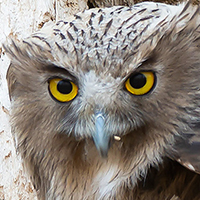
• Birding Siberia and the Russian Far East: Read our reports on Sikhote-Alin Nature Reserve, home of Blakiston’s Fish Owl; the Yamal Peninsula; and Kamchatka. For birders in Shanghai, an understanding of the birds of Siberia and the Russian Far East is crucial, as many species that are winter visitors and passage migrants in Shanghai breed in North Asia.
Featured photo: Great Tit Parus major kapustini sings from a birch at Jiayin Farms, Heilongjiang, China, 31 May. The record of this species by the shanghaibirding.com team of Craig Brelsford, Elaine Du, “Tiny” Craig Brelsford, and Phoebe Brelsford is the easternmost ever on eBird in China. (Craig Brelsford)

